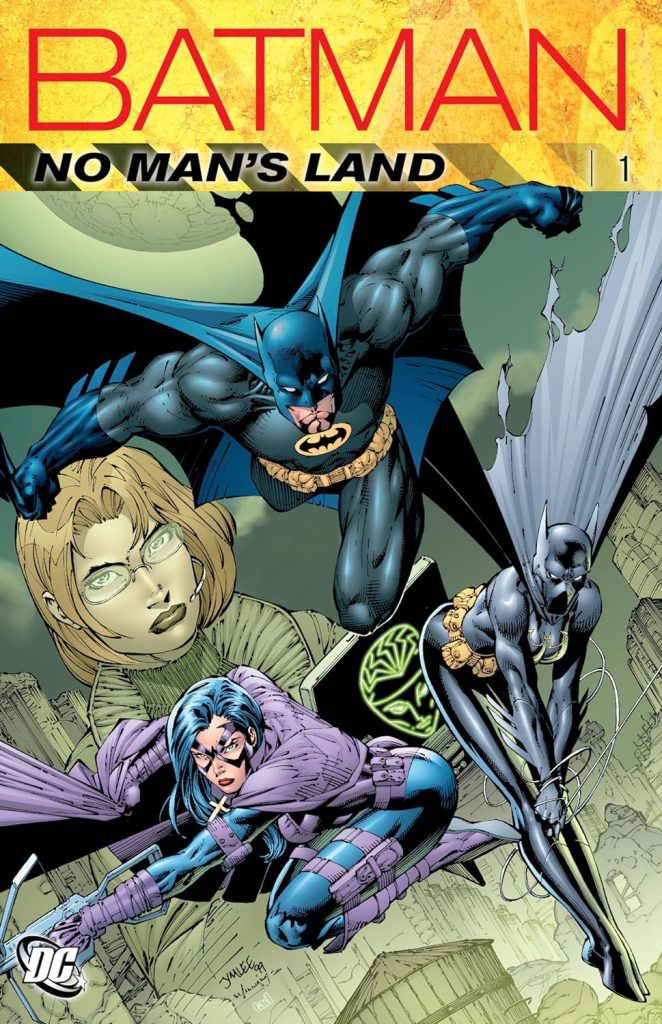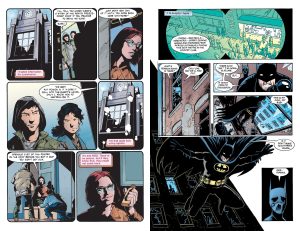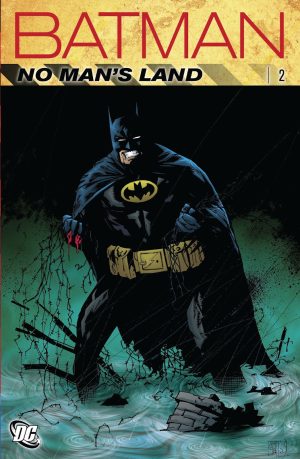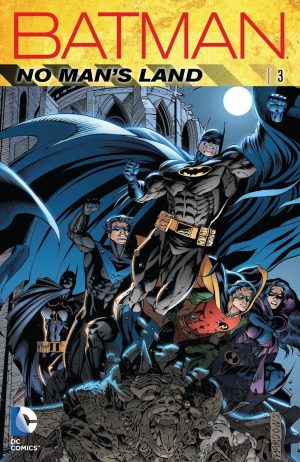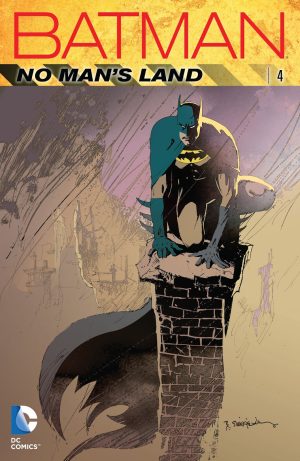Review by Frank Plowright
No Man’s Land is the last of Batman’s heavyweight 1990s crossovers, here with a devastated Gotham as the leading character, and covering all series starring heroes who operate there. Previously compiled over five graphic novels, this four volume version is bulkier and features considerably more material, primarily a dozen issues of Azrael omitted from the original accounting, but also plenty featuring Catwoman, Nightwing and Robin.
The highlight of the entire series remains the hundred or so opening pages supplied by screenwriter Bob Gale and Alex Maleev. Gale’s scene setting, punchy dialogue and fast-paced plotting still stand up as exemplary, and he introduces the idea of Gotham now divided into gang-controlled areas, with one of those gangs being the former Gotham police officers who’ve remained in the city. Barbara Gordon and James Gordon feature heavily, and it’s impressively atmospheric art from relative newcomer Maleev (sample art left). This was issued separately as No Law and a New Order, and for any other crossover the suggestion would be to consider restricting your sampling to that. No Man’s Land, though, isn’t any other crossover, and for starters you’d miss out on Gale’s very good later contribution.
Devin Grayson and Dale Eaglesham are responsible for the other main story here, which is by the numbers, acceptable, but predictable with the focus on the Huntress and a misguided mission, and the Scarecrow the wrong villain for the role he’s given. It was coupled with Gale and Maleev’s work as No Man’s Land Volume One in 1999.
Of the material added to the 1999 collection the most unconventional is D’Israeli’s cartooning on Ian Edginton’s look at how the Penguin exploits desperation (sample art right). It’s stylish, but his Batman is stiff and awkward. Nor are Jason Pearson, Damion Scott or Frank Teran usual for Batman art, all very stylised, with Pearson the best as Greg Rucka has Rene Montoya meet Two Face under unusual circumstances, starting a strange relationship he’d run through other series. Teran is quite bipolar, sometimes Ted McKeever, sometimes Paul Pope, without having their storytelling solidity and he doesn’t bring the best out of Rucka’s dark story. Scott on Scott Beatty’s mystery is very good, though.
Azrael’s early chapters continue the story of Nick Scratch, who in Road to No Man’s Land became a figure whose credibility diminished almost by the page. Sadly, Dennis O’Neil didn’t realise, and unfortunately he survives to recur in Volume 2, with which this is combined for the first No Man’s Land Omnibus. It’s a shame as the drama O’Neil supplies around that is good, a later Joker chapter hits the mark, and a morose Azrael wandering around Gotham is well handled, but artist Roger Robinson is a work in progress.
It’s drama involving ordinary people that’s frequently the best written portions of Batman crossovers, and Gale, O’Neil and Rucka all supply good examples, while Lisa Klink may not be as well known, but her story of a veteran protecting his home matches them. A fair few Gotham villains also show their faces, though, and they’ll come to predominate in later volumes, while Kelley Puckett and Jon Bogdanove show why Superman remains ineffective in the city. There’s also some excellent art, Guy Davis and Phil Winslade in addition to those already highlighted.
While No Man’s Land undeniably offers the highest quality of the 1990s Batman crossovers, it’s not as apparent in these revised collections as they include too much extraneous material.
